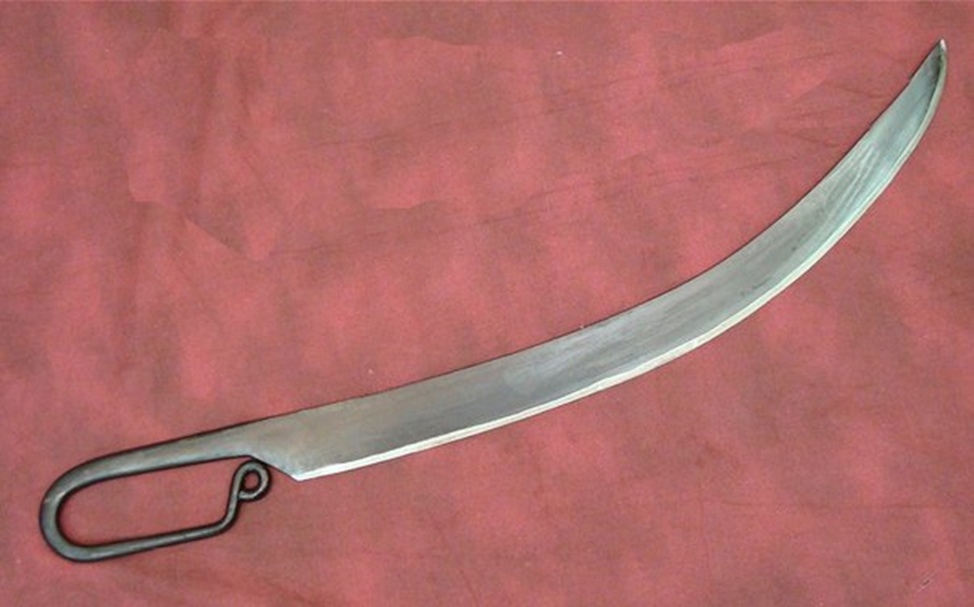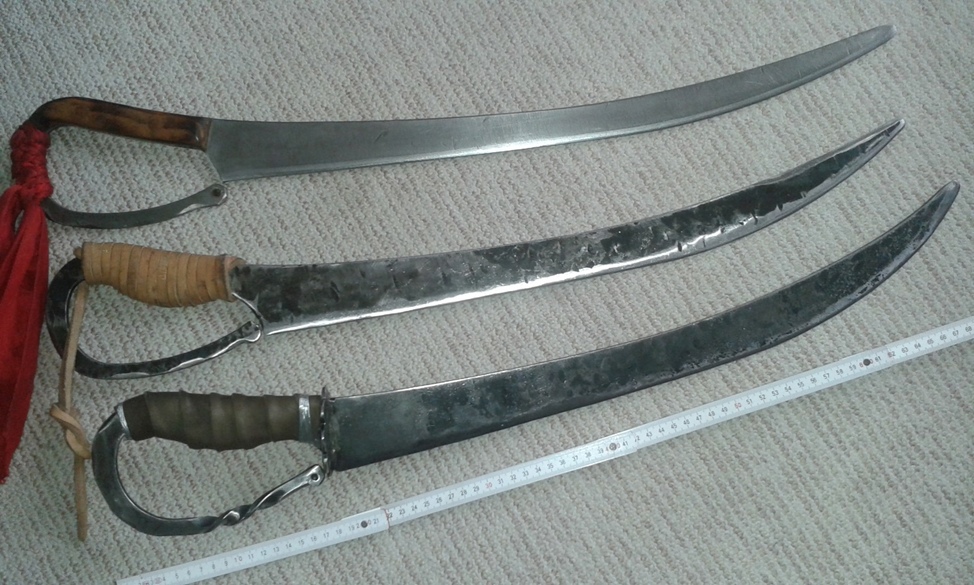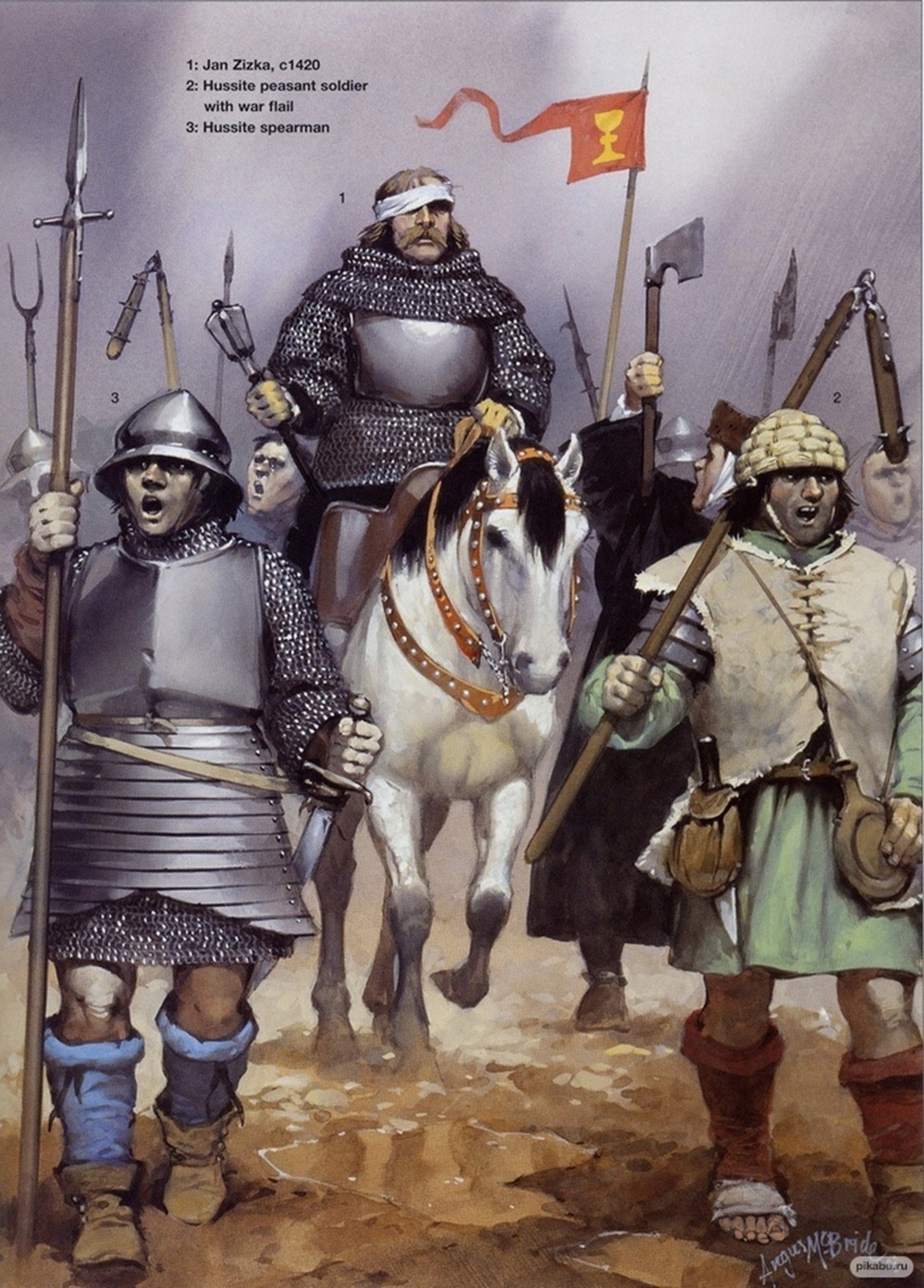
No products in the cart.
During the period of constant wars in Europe, a fairly cheap and effective weapon was needed. One of these examples was dusack (from Czech “tesák” – literally translated as “hunting sword").
Dusack became widespread in the territory of modern Czech Republic in the period between the Hussite Wars of 1419 – 1434 and the Thirty Years' War of 1618 – 1648 . From there, the spread began in the German lands, Austria and Hungary.
Dusack became popular due to the cheapness of production, it was made of the softest iron. This was the main advantage for the participants of the Hussite Wars, since the bulk of the rebels were peasants who could not afford more expensive bladed weapons. For the same reasons, it began to spread on the lands of the principalities of the Holy Roman Empire. The blade was 65-95 cm long, 5-6 cm wide, with a smooth narrowing to the tip. The thickness of the spine is 4-5 mm. The handle was usually a continuation of the blade, it was bent from the spine to the blade. Due to this, it could only be used with gloves or it was necessary to wrap the handle for greater comfort of the hand. The handle did not have a guard as a rule. It can be classified as a sabre, since it has a different curvature of the blade and is double-edged. The blade deals stabbing and slashing blows.

This
subtype of the saber was quite difficult to sharpen, but it was difficult to
break it while maintaining the correct conditions for the tempering of the
blade during forging. This also added advantages to the peasants' use of dusack.
Application in Fencing
schools
It also
began to be used in German fencing schools, as indicated by a number of works
on fencing, such as "Gründtliche Beschreibung der Kunst des Fechtens"
by Joachim Meyer, published in 1570. Meyer pointed out that dusack as a
training blade allows you to hone the possession of one-handed weapons.
For
training, a wooden model of this subtype of saber was made. Sometimes they were
sheathed with leather or produced completely and specially treated leather.
Unfortunately, no wooden or leather copies of dusack have survived to this day
due to poor preservation of the material. Very often in German fencing schools it was used to train almost all
blades, with the exception of the rapier. Fencers could conduct training of
paired weapons, combining rapier and dusack. The training dusack was used until
the 18th century.
Effectiveness on the
battlefield
The question arises of the effectiveness of the use of dusack during the wars. If we take the Hussite Wars as a basis, at that time this saber-type blade acted more as an auxiliary weapon in case of rapprochement with the enemy. The Hussites in their battles mainly used firearms, coupled with mobile fortresses – gulyay-gorod. Their tactics were effective against heavy European cavalry, which could not break through the guliai-gorod 's defenses in most clashes.

Accordingly, rapprochement with the enemy in close combat is assumed only if an advantage is gained or it is impossible to retreat in case of ambushes, as it was during the Battle of Ilava, where the Hussites were defeated. The dusack could be used by shooters and infantrymen who probably did not have spears or other thrusting weapon in their equipment. There was also an option to use as an auxiliary weapon to the main shaft.

This type
of saber could be effectively used against a warrior who could only be dressed
in a gambeson. Stabbing blows could pierce the underarm and inflict a wound
that would incapacitate the enemy.
Actually,
after the end of the Hussite wars and the acquisition of popularity in the 17th
century, dusack was used as a self-defense weapon of the urban and rural
population of German and Bohemian lands. Sometimes, with the help of this
saber, if necessary, the militia was equipped in a number of German lands. It
is also likely that it could be used as a tool in rural work and butchering of
hunting prey.
Further history of dusack:
By the
17th century, the dusack had fallen out of use on the battlefields, giving way
to a saber with a guard and more reliable protection of the hand. Dusack was
inconvenient to use and, as the centralization of States increased and,
accordingly, the financial capabilities of States increased, it was removed
from the arsenals. However, among modern reenactors and fans of tournament, it is quite popular since it
can be attributed to safe types of weapons for wrestling in reinforced armor
for tournament (stabbing blows are prohibited in tournament, which pose the
main danger to participants).
In
general, dusack as a fairly cheap bladed weapon has existed on the battlefield
for a long time. It was effective as an auxiliary weapon, during the maximum
reduction of the distance with the enemy. However, due to a number of
disadvantages, it should give way to more comfortable versions of the saber.